2016-07-10
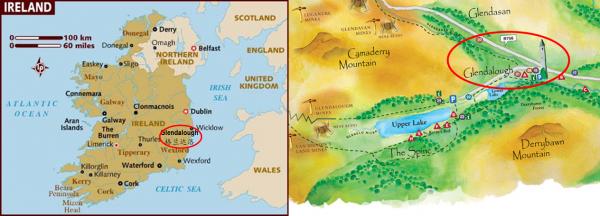
【Aiden in English】
The Irish are a much-labeled type of people, with stereotypes haunting every aspect of their culture. Some may say they like the color green, but it is considered somewhat unlucky in their culture. Leprechauns are real people. They were just mistaken as mythical beings by the locals. Then again, I'm not sure what you would call people randomly emerging from hillsides. Relatively, the 600 B.C.E. events version was taken as accurately as possible. At least there wasn't another religion that emerged from this story. However, what is true is that Ireland has a history of belief in supernatural powers and religions. Figures such as St. Patrick, St. Kevin, and other religious saints have their statues and faces everywhere around the capital, and the effect of Christianity lasts even further than in the cities. About an hour and a half away from Dublin, lies a ruin of an old Glendalough Monastery burned down by flames. This area of County Wicklow has a long history of being raided by Vikings, giving another stereotype of them being a rather mad bunch of travelers—a group of "soggy campers," as we Americans would say. The monastery had a cemetery, which nowadays has become the main attraction. Legends say St. Kevin is buried under a holy Trinity cross in a deep sleep. The Celtic cross differs from other Christian symbols in that the intersection is surrounded by a circle, which was a particular symbol of Ireland at the time. It represented the sun, which was considered and is now considered the most crucial part of society and, by extension, the Earth. The cross and the circle are combined, showing the two most important symbols in life as a Christian living in Ireland. Most people see the stone tomb and the Irish round tower, both erected in the center of the cemetery in the 19th century. The round tower serves a protective purpose. Earlier, I mentioned the raids made by the Vikings. People wouldn't have just left their stuff lying around, nor have had their people slaughtered in the backyard. So, a 98-foot/330-meter-tall circular tower was built to save items and people's heads. In the past, the Vikings preferred to hit and run, but they did not stay long. Certainly not long enough for the people hiding in the tower to run out of food and water. The gateway was small enough for one man to hold the fort, and the doorway was a few meters off the ground to stop a steady flow of Vikings. However, a flaw was soon discovered, as an open flame in the tower would suffocate anyone inside. Some people must've thought, "Hey, if there aren't any openings, we'll be safe." Unfortunately, it backfired a few times, but the Vikings didn't stay long enough to formulate a plan of this degree. I guess some of the TV shows starring the dumb Viking are correct. Ireland's mixed history, from the fabled Vikings to the historic change in St. Kevin, is something to look at. Whether you enjoy the stories of shamrocks or little men popping out of rocks, there is a legend for everyone, just like Ireland: there is something for everyone. 【红霞译】
爱尔兰人相当模式化,这一点从自身文化各个方面透视出来,也许有人会说他们喜欢绿色,但实际上绿色未必确切表达民族精粹。妖精本来实实在在,结果被当地人误以为诡秘莫测,话又说回来,我也吃不准该怎么面对冷不丁从山坡下来的陌生人,而对于发生在公元前六百年的历史,人们往往能够客观地看待它,至少无需考虑其它信仰的影响。
但是爱尔兰历史上一向尊崇神威信奉宗教,圣帕特里克“贵族”、圣凯文“仁爱”以及其他圣徒的人物造型和光辉形象在首都大街小巷比比皆是,基督教历史悠久,可以说早在城镇建立之前就已经深入人心。驱车离开都柏林约有一个半小时之后,我们便来到一所古老的格兰达洛“两湖谷”修道院,修道院曾因大火烧毁而变成废墟。过去很长时间里,所在的威克洛“维京‘海盗’之草地”郡这一带地区经常遭受北欧海盗侵袭,当地人被迫流离失所四处流浪,在美国人眼中真可谓“窝囊废”,修道院墓地保留完好,如今业已成为游客必经之地。
传说这座修道院圣十字架底下熟睡着一位圣徒──圣凯文,凯尔特“和平”十字与别的基督符号不同,其中央交叉处连接着一个圆环,那个年代实为爱尔兰独家使用,圆环代表太阳,过去是这样,现在也是如此,最重要的是它隐喻社会,也就是通常所指的地球;十字与圆环相结合,充分显示爱尔兰基督圣明。多数游人亲临现场参观墓碑石刻,还有十九世纪屹立在墓地中间的爱尔兰圆塔。
圆塔的建造纯属为了自我保护,上面我已提到北欧海盗,有了它,祖先们就不会把好吃好用的东西留给敌人任意践踏,也不会活活被屠杀惨死在自家后院。于是,一个大约98英尺/30米高的圆形庞然大物就这样被竖立起来,一来可以保障东西安在,二来还能免遭脑袋落地。那时北欧海盗喜欢打一枪换一个地方,无心按营扎寨,正好让老百姓躲在里面够吃够喝。塔口小到仅要一个人把守,塔门距离地面足有几米远,有效地控制海盗人流,可是建后不久即发现里面因为仅设一个通风口而造成呼吸不畅,有人肯定会想:“嗨,没有开口才叫安全。”但事与愿违,幸亏北欧海盗来去匆匆,爱尔兰日不必采取应对措施,现在我觉得电视里把北欧海盗说成傻冒毫不为过。 因为北欧海盗神出鬼没,使得爱尔兰历史悲喜交错虚实相生,圣凯文的出现改变了爱尔兰人命运,这些事实都值得晚辈了解关注。你无论喜欢四叶草的故事还是石缝里蹦出来小鬼头的童话,爱尔兰本身就是一个传说,总是令世人皆大欢喜。
Today in History(历史上的今天):
2016: Dublin, the Pale of Ireland(爱尔兰都柏林·栅栏之地) 2016: Dublin, UNESCO City of Literature IRL(爱尔兰都柏林·文学城)
2016: Avoca, IRL's Oldest Weaving Mill(爱尔兰阿沃卡·最老的手织毛织厂) 2016: County Wicklow, the Garden of Ireland(爱尔兰威克洛·花园之郡)
2014: Bug Show @ Soccer YMCA Camp(昆虫到访基督教青年会夏令营) 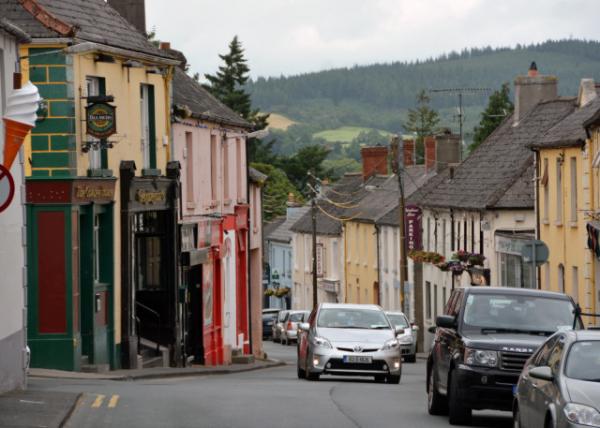
Glendalough Valley (两湖谷村) 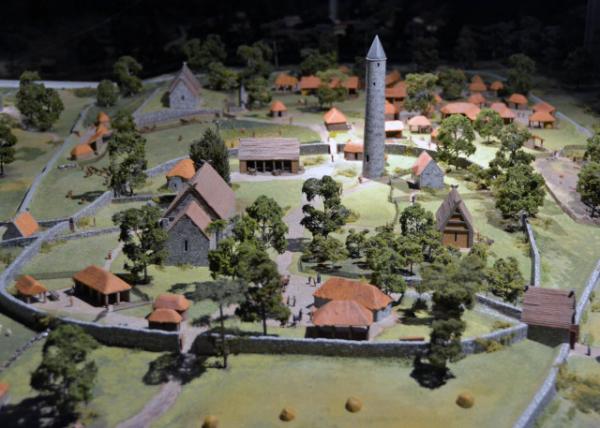
Glendalough Monastic Site (两湖谷洛修道院示意图)  Painting of 12 Saints @ Visitor Ctr Painting of 12 Saints @ Visitor Ctr
(游客中心·圣十二教徒油画) 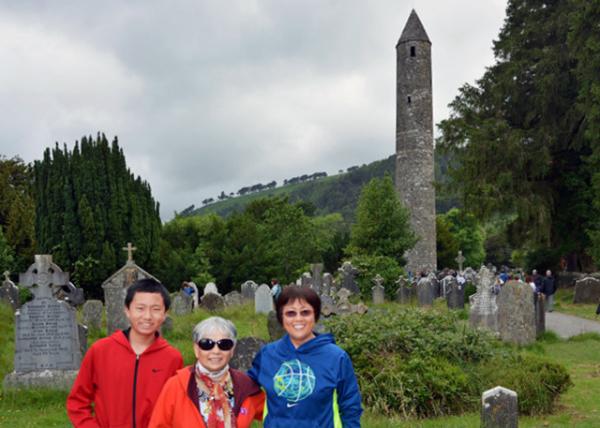 The Ruin of Glendalough Monastery The Ruin of Glendalough Monastery
(两湖谷洛修道院遗址 07-10-2016) 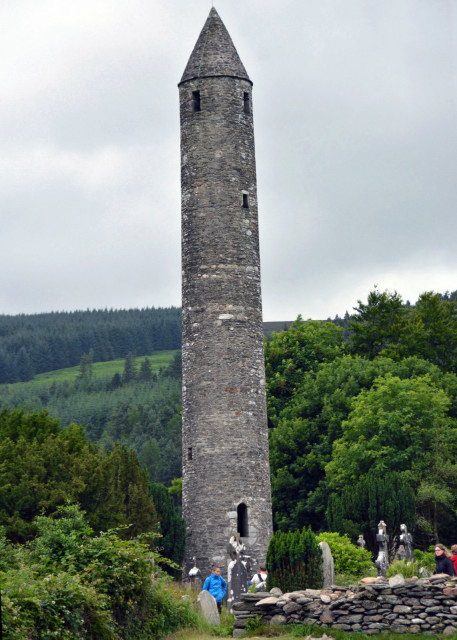
30 meter/98 foot-Tal I Irish Round Tower (30米/98英尺高的苏格兰圆塔) 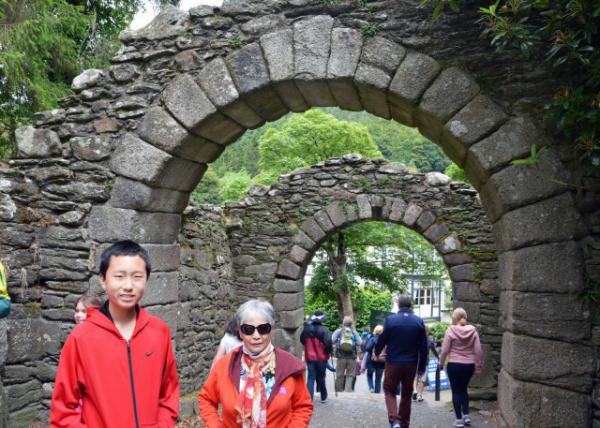 Gatehouse (门房 07-10-2016) Gatehouse (门房 07-10-2016)
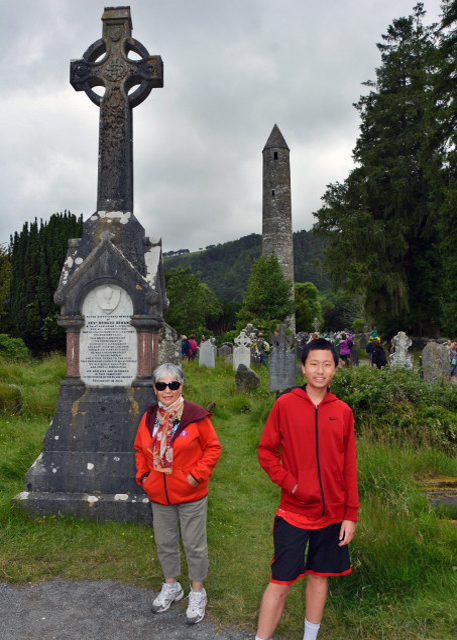
Irish High-Crosses (爱尔兰高十字架 07-10-2016) 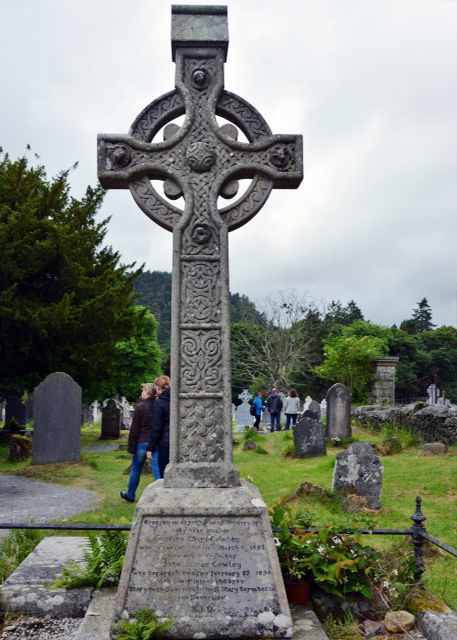
Unique Combination of Circle & Cross Suggesting A Melding of Pagan Sun-Worship w/ Early Christianity (独特的圆形和十字形组合可能表示异教徒对太阳的崇拜与早期基督教的向往)
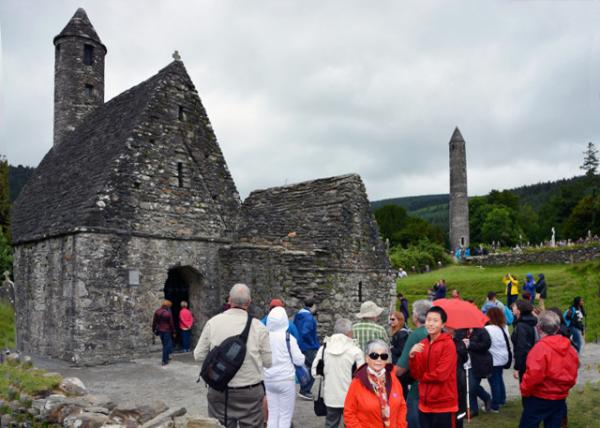 Saint Kevin's Monastery Saint Kevin's Monastery
(圣凯文“仁爱”修道院 07-10-2016) 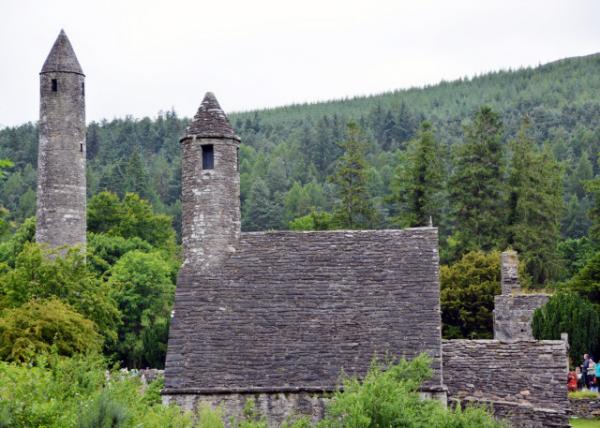 Spires (尖塔) Spires (尖塔)
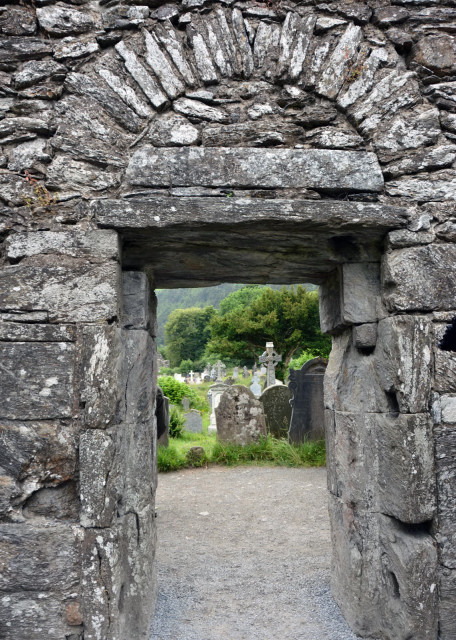
Gateway (门道) 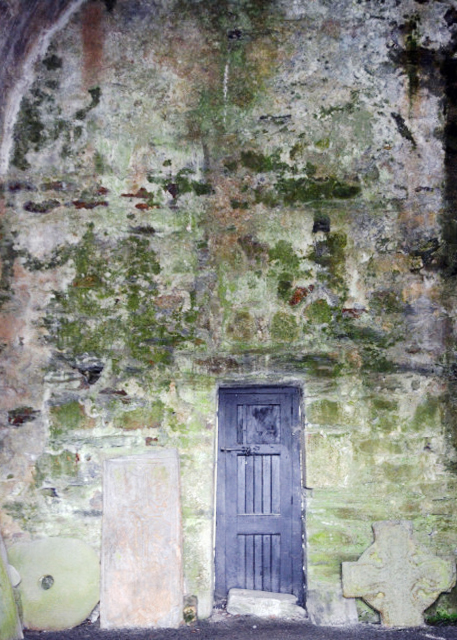
St. Kevin Kitchen (圣凯文厨房) 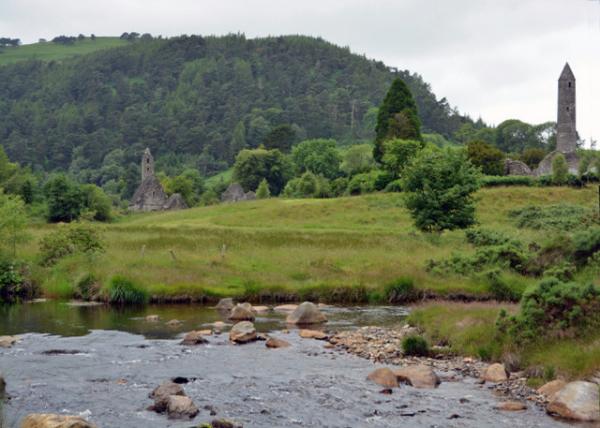 Saint Kevin's Monastery by Lower Lake Saint Kevin's Monastery by Lower Lake
(圣凯文修道院靠近下河) 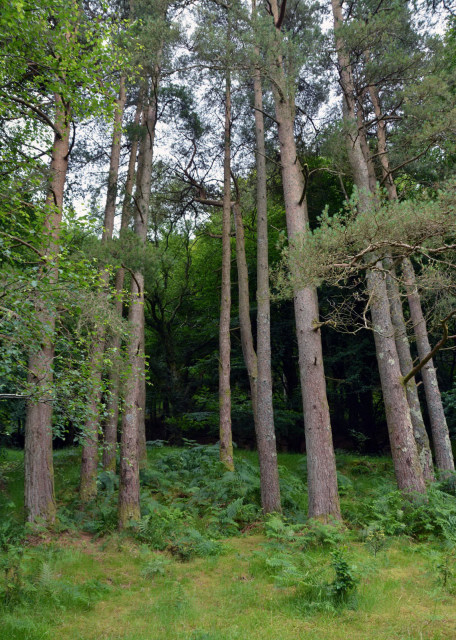
Shamrock Woodland (三叶草林地) 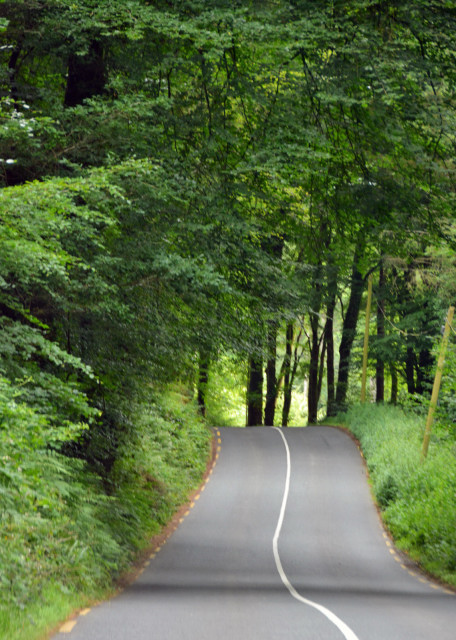
Dark Hedges (黑暗树篱) Crosslinks(相关博文): UK(出游英国)
Europe(欧洲掠影) 7th Grade(初中二年级) |
